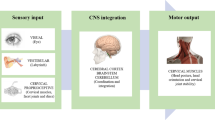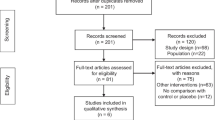Abstract
Electrical impedance myography (EIM) is a novel, noninvasive, and painless technique for quantitatively assessing muscle health as well as disease status and progression. The preparatory work for commercial adhesive electrodes used in previous EIM measurements is tedious, as the electrodes need to be cut, repeatedly applied, and removed. Moreover, the electrode distances need to be measured many times. To overcome these problems, we developed a convenient and practical handheld EIM probe for assessing carpal tunnel syndrome (CTS) in the small hand muscles. To reduce the electrode–skin contact impedance (ESCI), the micropillared and microholed stainless steel electrodes (SSEs) contained in the probe were fabricated using a laser processing technique. When covered with saline, these electrodes showed lower ESCIs than a smooth SSE and Ag/AgCl electrode. The probe was shown to have excellent test–retest reproducibility in both healthy subjects and CTS patients, with intraclass correlation coefficients exceeding 0.975. The reactance and phase values of the abductor pollicis brevis (affected muscle) for CTS patients were consistently lower than those for healthy subjects, with a 50-kHz difference of 37.1% (p < 0.001) and 31.0% (p < 0.001), respectively. Further, no significant differences were detected in the case of the abductor digiti minimi (unaffected muscle). These results indicate that EIM has considerable potential for CTS assessment and hence merits further investigation.







Similar content being viewed by others
Abbreviations
- ADM:
-
Abductor digiti minimi
- ALS:
-
Amyotrophic lateral sclerosis
- APB:
-
Abductor pollicis brevis
- CMAP:
-
Compound motor action potential
- CTS:
-
Carpal tunnel syndrome
- DML:
-
Distal motor latency
- EIM:
-
Electrical impedance myography
- ESCI:
-
Electrode-skin contact impedance
- ICC:
-
Intraclass correlation coefficient
- SNAP:
-
Sensory nerve action potential
- SNCV:
-
Sensory nerve conduction velocity
- SSE:
-
Stainless steel electrode
References
Ching, C. T., et al. Characterization of the muscle electrical properties in low back pain patients by electrical impedance myography. PLoS ONE 8(4):e61639, 2013.
Garmirian, L. P., et al. Discriminating neurogenic from myopathic disease via measurement of muscle anisotropy. Muscle Nerve 39:16–24, 2009.
Geisbush, T. R., et al. Inter-session reliability of electrical impedance myography in children in a clinical trial setting. Clin. Neurophysiol. 126(9):1790–1796, 2015.
Ibrahim, I., et al. Carpal tunnel syndrome: a review of the recent literature. Open Orthop. J. 6:69–76, 2012.
Kalvøy, H., et al. Electrical impedance of stainless steel needle electrodes. Ann. Biomed. Eng. 38(7):2371–2382, 2010.
Kautek, W., et al. Femtosecond-pulse laser ablation of metallic, semiconducting, ceramic, and biological materials. SPIE Proc. 2207:600–611, 1994.
Khalil, S. F., et al. The theory and fundamentals of bioimpedance analysis in clinical status monitoring and diagnosis of diseases. Sensors (Basel) 14(6):10895–10928, 2014.
Li, J., et al. A comparison of three electrophysiological methods for the assessment of disease status in a mild spinal muscular atrophy mouse model. PLoS ONE 9(10):e111428, 2014.
Li, Z., et al. Microneedle electrode array for electrical impedance myography to characterize neurogenic myopathy. Ann. Biomed. Eng. 44(5):1566–1575, 2016.
Luft, A., et al. A study of thermal and mechanical effects on materials induced by pulsed laser drilling. Appl. Phys. A 63:93–101, 1996.
McAdams, E. T., et al. Factors affecting electrode-gel-skin interface impedance in electrical impedance tomography. Med. Biol. Eng. Comput. 34:397–408, 1996.
McIlduff, C., et al. An improved electrical impedance myography (EIM) tongue array for use in clinical trials. Clin. Neurophysiol. 127(1):932–935, 2016.
McIlduff, C. E., et al. Optimizing electrical impedance myography of the tongue in ALS. Muscle Nerve 2016. doi:10.1002/mus.25375.
Middleton, S. D., et al. Carpal tunnel syndrome. BMJ 349:g6437, 2014.
Narayanaswami, P., et al. Utilizing a handheld electrode array for localized muscle impedance measurements. Muscle Nerve 46(2):257–263, 2012.
Perry, M. D., et al. Ultrashort-pulse laser machining of dielectric materials. J. Appl. Phys. 85(9):6803–6810, 1999.
Rafael, R., et al. Femtosecond laser micromachining in transparent materials. Nat. Photon. 2:219–225, 2008.
Riccò, M., et al. Personal risk factors for carpal tunnel syndrome in female visual display unit workers. Int. J. Occup. Med. Environ. Health 29(6):927–936, 2016.
Rizvi, N. H., et al. Femtosecond laser micromachining: current status and applications. RIKEN Rev. 50:107–112, 2003.
Rutkove, S. B. Electrical impedance myography: background, current state, and future directions. Muscle Nerve 40(6):936–946, 2009.
Rutkove, S. B., et al. Localized bioimpedance analysis in the evaluation of neuromuscular disease. Muscle Nerve 25:390–397, 2002.
Rutkove, S. B., et al. Characterizing spinal muscular atrophy with electrical impedance myography. Muscle Nerve 42(6):915–921, 2010.
Rutkove, S. B., et al. Electrical impedance myography as a biomarker to assess ALS progression. Amyotroph. Lateral Scler. 13(5):439–445, 2012.
Rutkove, S. B., et al. Electrical impedance myography in spinal muscular atrophy: a longitudinal study. Muscle Nerve 45(5):642–647, 2012.
Rutkove, S. B., et al. Electrical impedance myography correlates with standard measures of ALS severity. Muscle Nerve 49(3):441–443, 2014.
Rutkove, S. B., et al. Cross-sectional evaluation of electrical impedance myography and quantitative ultrasound for the assessment of Duchenne muscular dystrophy in a clinical trial setting. Pediatr. Neurol. 51(1):88–92, 2014.
Sanchez, B., et al. Evaluation of Electrical Impedance as a Biomarker of Myostatin Inhibition in Wild Type and Muscular Dystrophy Mice. PLoS ONE 10(10):e0140521, 2015.
Schwartz, S., et al. Optimizing electrical impedance myography measurements by using a multifrequency ratio: a study in Duchenne muscular dystrophy. Clin. Neurophysiol. 126(1):202–208, 2015.
Shellikeri, S., et al. Electrical impedance myography in the evaluation of the tongue musculature in amyotrophic lateral sclerosis. Muscle Nerve 52(4):584–591, 2015.
Spieker, A. J., et al. Electrical impedance myography in the diagnosis of radiculopathy. Muscle Nerve 48(5):800–805, 2013.
Statland, J. M., et al. Electrical impedance myography in facioscapulohumeral muscular dystrophy. Muscle Nerve 54(4):696–701, 2016.
Sugioka, K., et al. Femtosecond laser 3D micromachining: a powerful tool for the fabrication of microfluidic, optofluidic, and electrofluidic devices based on glass. Lab Chip 14(18):3447–3458, 2014.
Sung, M., et al. The effect of subcutaneous fat on electrical impedance myography when using a handheld electrode array: the case for measuring reactance. Clin. Neurophysiol. 124(2):400–404, 2013.
van Suchtelen, M., et al. Progression of carpal tunnel syndrome according to electrodiagnostic testing in nonoperatively treated patients. Arch. Bone Joint. Surg. 2:185–191, 2014.
Wang, L. L., et al. Electrical impedance myography for monitoring motor neuron loss in the SOD1 G93A amyotrophic lateral sclerosis rat. Clin. Neurophysiol. 122(12):2505–2511, 2011.
Wu, J. S., et al. Assessment of aged mdx mice by electrical impedance myography and magnetic resonance imaging. Muscle Nerve 52(4):598–604, 2015.
Yin, Y., et al. Comparison of three kinds of electrode-skin interfaces for electrical impedance scanning. Ann. Biomed. Eng. 38(6):2032–2039, 2010.
Zaidman, C. M., et al. Electrical impedance myography in Duchenne muscular dystrophy and healthy controls: a multicenter study of reliability and validity. Muscle Nerve 52(4):592–597, 2015.
Acknowledgments
This study was supported by the National Natural Science Foundation of China (Grant No. 61376072, 61334008). The authors acknowledge the support of the Department of Hand Surgery, HuaShan Hospital of Fudan University.
Author information
Authors and Affiliations
Corresponding authors
Additional information
Associate Editor Estefanía Peña oversaw the review of this article.
Zhao Li and Lingfen Chen have contributed equally to this study and share first authorship.
Rights and permissions
About this article
Cite this article
Li, Z., Chen, L., Zhu, Y. et al. Handheld Electrical Impedance Myography Probe for Assessing Carpal Tunnel Syndrome. Ann Biomed Eng 45, 1572–1580 (2017). https://doi.org/10.1007/s10439-017-1819-3
Received:
Accepted:
Published:
Issue Date:
DOI: https://doi.org/10.1007/s10439-017-1819-3




